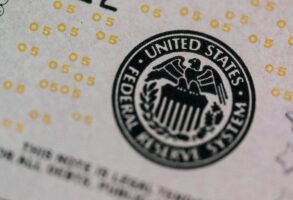
Published November 1, 2018
With a few days to go to the midterms, the election’s direction is pretty clear. Democrats will do well everywhere except the Senate, where the map strongly favors Republicans despite the country’s general mood. But there’s a big difference between a 25 and a 45-seat gain in the House, and there are still things that can happen that could make a big difference for the outcome. Call them the four “what ifs.”
Former Secretary of Defense Donald Rumsfeld called these “known unknowns.” By that he meant there are things we can know in advance will be important, but we can’t know firmly in advance exactly how they will play out. In any campaign we know that turnout, undecideds, and late-breaking events can have an impact. But as hard as professionals have tried, they just have not been able to quantify the direction these might take before election night. So most expert professionals in some sense will be flying just as blind as the average Joe or Jane watching the returns on election night.
Observers have long hypothesized that Democratic anger at president Trump will fuel record high turnout this year. Some evidence supports that thesis. Polls have shown Democratic interest in the midterms to be at a record high, higher even than in previous good election years for Democrats such as 2006 or 2008. Democrats greatly outperformed their expected vote shares in a host of special elections since the Trump inauguration. Data from those specials and the regularly scheduled elections in 2017 all show that areas with large numbers of Democrats turned out in higher margins than areas with large numbers of Republicans. One estimate said this added about 3.5 percent to Virginia Governor Ralph Northam’s margin when he defeated Republican Ed Gillespie by about nine points last fall.
Other observers contend that Republicans now have closed that gap, in part because of the GOP anger that Democratic tactics and behavior during the Brett Kavanaugh hearings engendered. Again, there is evidence to support this. Republican enthusiasm has risen sharply recently so that it nearly matches Democratic enthusiasm. Early vote totals show Republican voters are casting ballots via absentee in states that permit or encourage it. If these data are correct, then Democratic hope of winning a large number of seats that Trump won in 2016 may be dashed.
Try as we might we cannot be sure whether one, both, or neither of these ideas is correct. We’ll just have to see on Election Day whether turnout differentials help one side to outperform consistently the expected results based on the underlying partisan trends.
The same holds true for undecided voters. Traditionally, we have thought that undecideds break against the incumbent or the governing party by a substantial margin: if they are not already for you, the odds are they are against you. But the New York Times-Siena polls show some tantalizing evidence suggesting the opposite might be true, that undecideds are more likely to break in favor of the Republicans. In virtually all of the polls finished within the last 10 days, Republican candidates are running behind both Trump’s job approval ratings and the share of people who say they want Republicans to control Congress.
The only explanation for this is that a small but measurable number of people like Trump and want Republicans generally to prevail but haven’t quite made up their mind about the specific candidate in question. If so, I would expect the late breaking undecideds to go to the party with which they are familiar, even if the particular candidate is troublesome for some reason. This phenomenon is one of the big reasons Trump did better than the polls suggested—there were a lot of “reluctant” Trump voters who liked Republicans, but had doubts about him, and did not decide to cast their votes for him until the very last minute. A similar occurrence this cycle could limit the damage for Republicans.
But again, we won’t know until election night when we can compare what candidates get with the polling averages just before election day.
Mentioning polls raises a third known unknown: polling error. The polls get a bad rap from 2016. The fact is, they were generally correct about Hillary Clinton’s margin, overstating it only by a slight degree. They missed the election outcome only because Trump did something no one has done for over a century: lose the popular vote by more than a point and still win the Electoral College.
But that doesn’t mean polls can’t be wildly off. In 2010, the final polling averages in Nevada and Colorado said Republicans would win both Senate seats. Instead, Democrats won both, and it wasn’t all that close in Nevada. In 2012, polls said Heidi Heitkamp would lose the North Dakota Senate seat that she won, and in 2014 polls in Kansas, Kentucky, and Virginia either missed the outcome or were far off on the margin in a number of statewide races.
These states share a couple of characteristics that might be telling. They tend to be either places where Republican strength is centered among whites without a college degree or where Democrats need high turnout from Mexican-American voters. It could be that voters in these two groups are somewhat less likely to answer polls, meaning that many less sophisticated pollsters fail to correct for these tendencies and produce skewed results.
In this cycle, each trend could help each party depending on where the poll is taken. Democratic margins could be understated in Nevada, Arizona, or Florida where large numbers of Latino voters reside. Similarly, Republican strength in Montana, Indiana, Missouri, and Wisconsin could be understated if whites without a college degree are avoiding those pesky phone calls. But as with the other two factors, we just cannot know if we are seeing systemic polling error until election night itself.
The final factor to weigh is how the events of the last few days will be received by voters. President Trump clearly wants to end the election by talking about immigration, and by introducing the question of birthright citizenship into the mix he has been successful both in doing that and in shifting media attention away from the Pittsburgh massacre.
But is this a plus, a minus, or a nothing burger? Polls always have a lag time, and no national poll yet has been taken completely within the couple of days since he first raised the topic. Unless exit polls specifically ask about this—and they are unlikely to, as the questionnaires almost certainly have already been printed and disseminated—we might never know if an unexpected movement on election day was due to the president’s gambit.
The presence of known unknowns is one reason why election forecasting will never be a science despite the ongoing efforts to create elaborate predictive models. Models can be very helpful, but they are only as good as the assumptions built into them.
Thus, in 2016 the apostle of political data analysis, Sasha Issenberg, confidently created a model for Slate that told us who was winning each swing state as the aggregate vote totals were being reported throughout the day. Their model told us that Clinton would win Iowa, Ohio, Florida, Pennsylvania, and Wisconsin—all states she lost, in some cases by large margins. Keep that example in mind over the several days as you read or hear confident predictions about what will happen—and then settle in front of your computer or the television on election night to watch as someone inevitably gets it wrong.
Henry Olsen is a senior fellow at the Ethics and Public Policy Center, a think tank in Washington D.C. He is also an editor at UnHerd.com where he writes about populism and politics around the world. He is the co-author, with Dante Scala, of The Four Faces of the Republican Party (Palgrave, 2015) and is the author of The Working Class Republican: Ronald Reagan and the Return of Blue-Collar Conservatism (HarperCollins, 2017).








